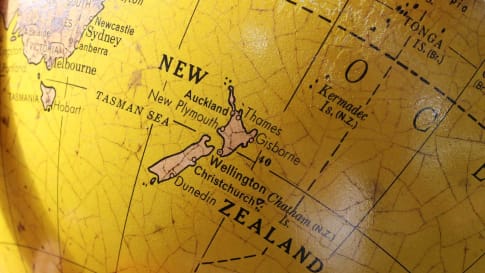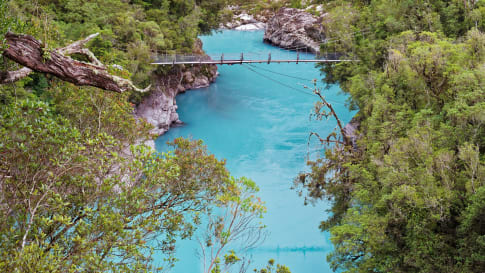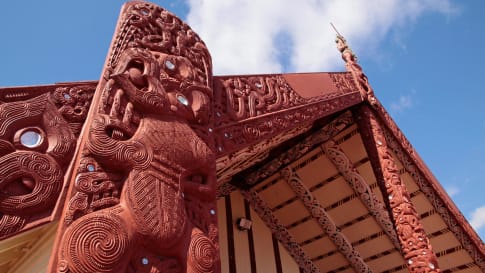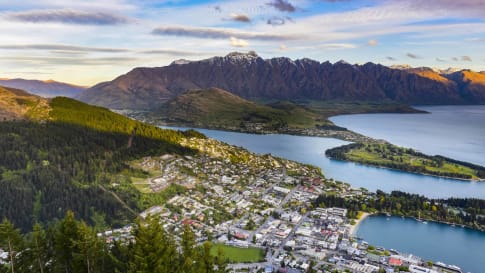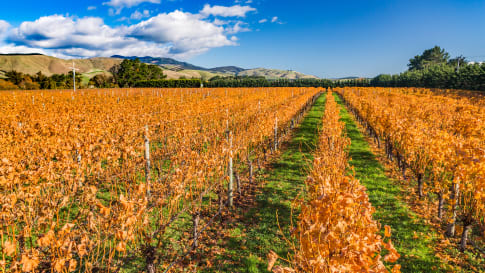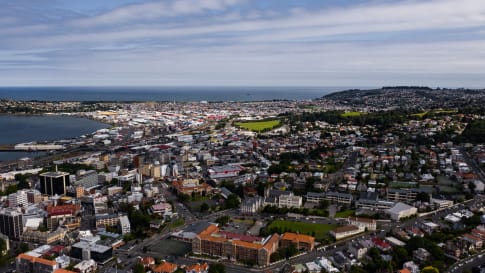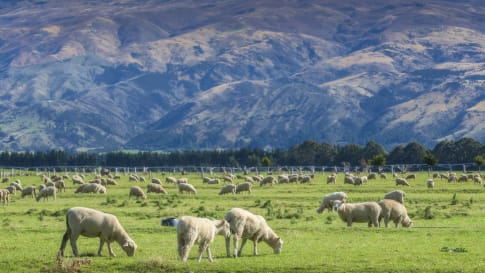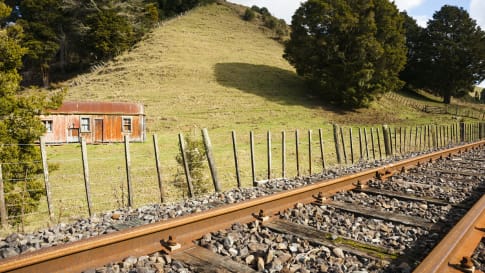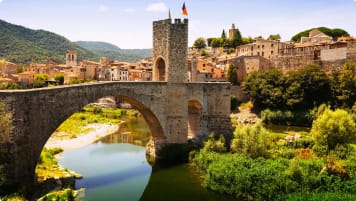Small group tour of New Zealand's South Island
Escorted 17 day small group tour of the West and East coast of New Zealand’s South island. Off the beaten track, for like minded people curious about history, culture, wine and landscapes. Your tour director and local guides share their knowledge with you the traveller on this New Zealand tour for senior travellers.
From €8,159EUR
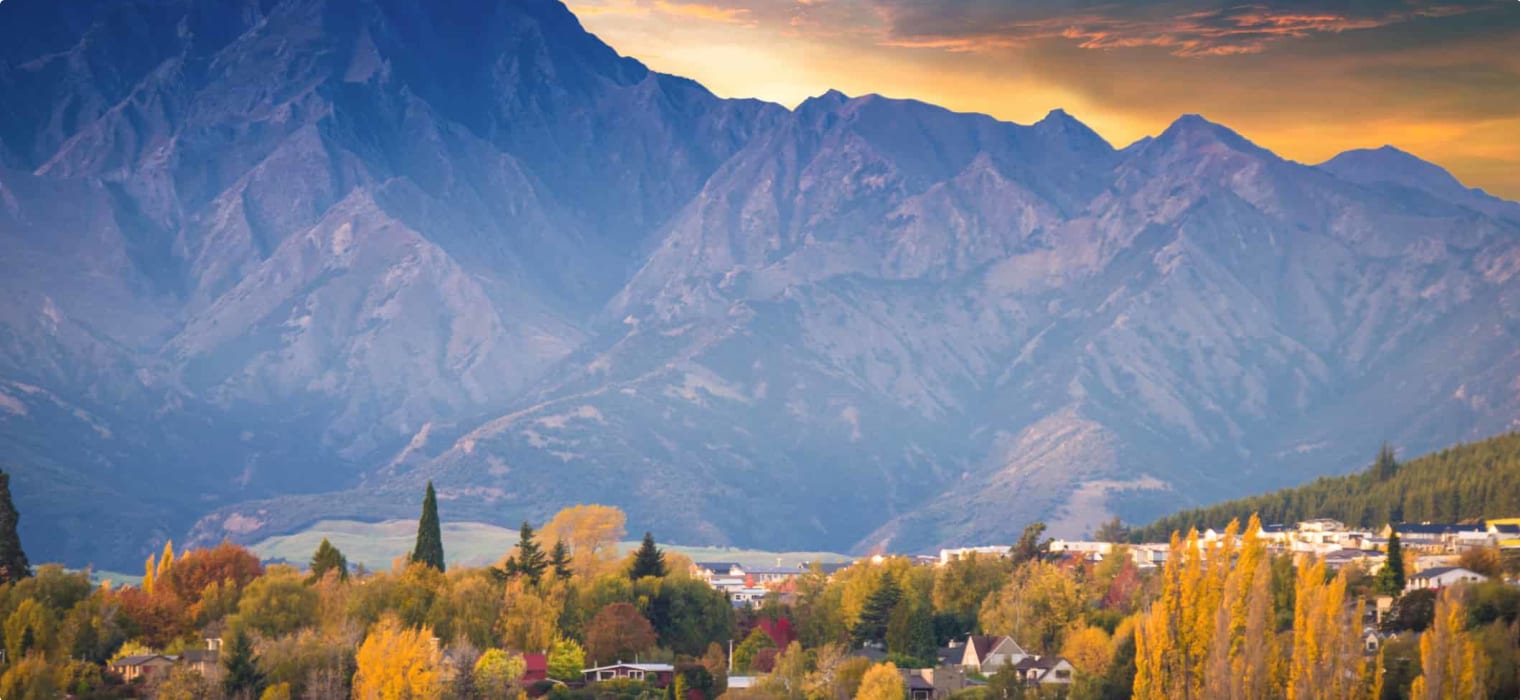
Highlights
- 1. Meet and learn from Maori greenstone carvers about the heritage and history of Maori
- 2. Spend time immersed in the Gold rush city of Dunedin
- 3. Learn about leading New Zealand wines particularly the Pinot Noir in Otago
- 4. Visit and learn about the history of the Victorian era colonial gold and then sheep rush in the South island
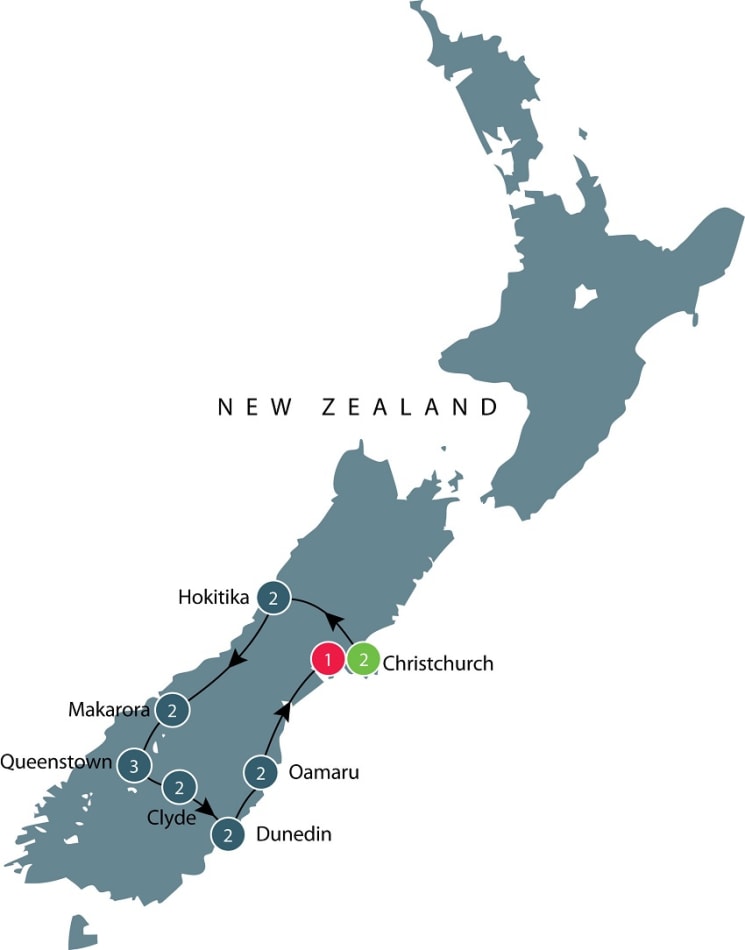
Departure Dates
| Departure Date | Price |
|---|---|
| 20 October 2025 Ends 05 November 2025 • 17 days €8,159 Twin €9,453 Single Available | Selected |
| 24 February 2026 Ends 11 March 2026 • days €8,394 Twin €9,737 Single Available | |
| 19 October 2026 Ends 04 November 2026 • days €8,394 Twin €9,737 Single Available |
Small Group Tour of New Zealand's South island
Odyssey Traveller is pleased to introduce our new small group tour of New Zealand, focusing on the beautiful South Island. Our tour is for up to 15 people, typically mature and senior travellers joining as a couple or as solo traveller. This program will guide travellers through the history, Maori culture, and landscapes of the South Island of New Zealand including the World heirtage Fiordland national park and Milford sound. Our itinerary gets off the beaten track, following the east coast of the South Island through to the West coast, returning to Christchurch.
The arrival of Europeans - mostly British settlers - in New Zealand set in motion a startling and ultimately largely successful co-existence with the Maori people, that will be the focus of this small group South Island tour of New Zealand.
New Zealand was initially not of interest to colonial powers as there was no real mineral deposit wealth in the country. So the first few decades were tough for immigrants with low numbers dealing with a high proportion of mostly friendly but rather fierce and competent locals. Colonists were appealing to younger sons back in the British Isles to come and make their fortune in the South Pacific and making pastoral leases attractive to those with some money but not lots of it. The deal was you had to put a certain proportion of sheep onto a bit of land to gain a pastoral lease. This was just gathering pace in the late 1850s in New Zealand. Then there was a sniff of gold in the air, with the first major rush announced in Lawrence in 1861. The combination of available meat plus an immediate and large market worked together to kickstart the economic growth of New Zealand. Wool to England was a further bonus. The advent of electrification in 1882 then opened up meat exports to the UK which resulted in a healthy colony until the EEC appeared on the scene in the 1970s.
This tour focuses on that initial period in the bottom of the South Island. There was a flow of mining immigrants at the time which started in Europe, went to the US looking for gold (San Francisco 49ers), moved on to Victoria in the 1850s, and then onto New Zealand in the 1860s. Central Otago had very few trees at the time and the ones we admire today reflect that flow, with Redwoods from the California coast and gum trees from Australia.
On our small group tour of New Zealand:
New Zealand (Maori: Aotearoa) is an island country with a total land area of 268,000 square kilometres (103,500 sq mi) in the southwestern Pacific Ocean. It is one of the most southernmost countries in the world, about 2,000 kilometres (1,200 mi) east of Australia. The country has two main islands: the North Island (Te Ika-a-Māui) and the South Island (Te Waipounamu), and about 600 smaller islands.
Our 17-day small group tour of New Zealand's South Island is the best guided tour of the island's west and east coast, designed especially for mature and senior travellers.
This small group tour will be accompanied by an Odyssey tour guide and are joined by expert local guides who will impart their knowledge about the places we will visit. Odyssey conducts educational tours designed for small groups of mature and senior travellers, focusing on history, culture, wildlife and other areas of particular interest where the trip is taking place. A small group tour is typically between 6 to 12 people. The cost of an Odyssey Traveller guided tour is inclusive of all entrances (unless otherwise indicated), tipping, and majority of the meals throughout the trip.
This particular tour has periods of free time built into the itinerary, allowing you explore each destination at your own pace, and choose from a variety of available activities. This way, we make sure that there is something to enjoy for every kind of traveller.
Articles about New Zealand published by Odyssey Traveller:
- Questions about New Zealand
- Foundations for democracy in New Zealand: 900s - 1945
- Definitive Guide to Auckland, New Zealand
For all the articles Odyssey Traveller has published for mature aged and senior travellers, click through on this link.
External articles to assist you on your visit to New Zealand:
Gallery


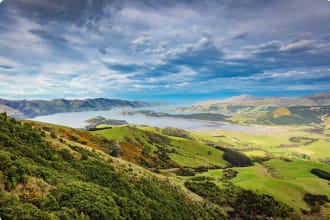


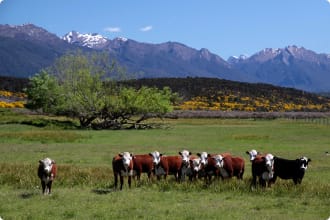

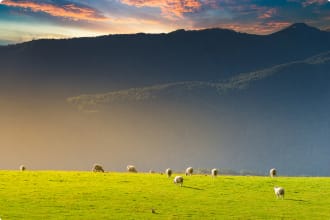
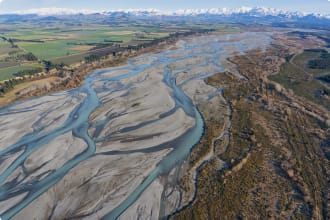
Itinerary
16 days
Day 1 : Christchurch
Accommodation: Christchurch TBA
We meet in Christchurch, introducing ourselves and enjoying a welcome dinner with our tour leader.
Day 2: Christchurch
Accommodation: Christchurch . TBC
Today we head out to explore Christchurch and Sumner. Learning about the history of the this city and its bluestones.
Day 3: Hokitika via Arthurs pass
Accommodation: Cowboy Paradise or similar
Today the group travels across to the West coast via Arthurs pass, we may take the train while our coach travels separately. History and the settlement of the Canterbury plains is close to hand.
Group Dinner.
Day 4 : Hokitika
Accommodation: Cowboy Paradise or similar
Today we spend the day with Maori greenstone maters carver and gold prospector Bevan Climo, understanding those early years, early interaction with Maori and gold mining. Bevan has also prospected for gold in Australia.
We’ll also see some historic sights around Hokitika.
Day 5: Makarora
Accommodation: Makarora Ranch or similar.
We drive down the west coast of the island with a stop at Okarito Lagoon, an international port and at Whataroa where two tectonic plates are exposed. We cross the Haast Pass and will end our journey at Makarora Ranch.
Day 6: Makarora
Accommodation: Makarora Ranch or similar.
You may take the day as a quiet one to relax and enjoy the beautiful surroundings.
Or alternatively this is a rare time when we offer this as pre- booked option for the day at an additional cost. Travellers can discover the back country from the air with a helicopter experience followed by a 3 hour hike on old trails, at the end we meet with a jetboat for our trip back to our accommodation.
Day 7: Queenstown
Accommodation: Queenstown
Today we head down past Lake Wanaka and Lake Hawea. We will stop for lunch somewhere very scenic owned by a local geologist who is full of stories before we continue through Wanaka and over the Crown Range Road – the original way Queenstown was first found. At Cardrona Tavern we take a short stop and the opportunity for a refreshing drink or a pint.
Day 8: Queenstown
Today we explore the picturesque Queenstown in the morning and enjoy a wine tasting in the afternoon.
Day 9: Queenstown
Accommodation: Te Anau TBA.
In the morning we make a short trip to visit Glenorchy at the end of the lake, and possibly a high country station. This afternoon we drive through to Te Anau.
Group evening meal.
Day 10: Clyde
Accommodation: Arrowtown. TBA.
In the morning we depart for Milford sound. The group joins the morning cruise up to 2 hours. After pausing for lunch, the group travel back around to stay in Arrowtown.
Group evening meal
Day 11: Clyde
Accommodation: Lord Clyde or similar
We start the day with exploring Arrowtown and then visit St Bathans, Ophir and other gold mining sites in the area. Following, we drop into Lauderdale for lunch and a walk around a property which was a former high country station farmstead and a successful gold miner’s residence. Later in the afternoon we return to Clyde.
Day 12: Dunedin
Accommodation: Dunedin TBA
Today our group heads south to see the original gold strike location at Lawrence, then continue around to Dunedin.
Day 13: Dunedin
Accommodation: Dunedin TBA
Our day is spent exploring Dunedin on a historic tour, including Port Chalmers where the first refrigeration ship left for the UK.
Day 14: Dunedin
Accommodation: Dunedin TBA
In the morning we visit Dunedin’s museums followed by a free afternoon.
Day 15: Oamaru
Accommodation: Oamaru TBA
We continue our journey around the South Island today, we depart Dunedin and visit a private coastal farm which is home to our native yellow-eyed penguin and a decent population of seals and sea lions and onto Oamaru.
Day 16 : Oamaru
Accommodation: Oamaru TBA
We will visit the old flour mill today, and see it back in operation especially for our small group. Our day continues with a visit to a historic farm and the historic port area of Oamaru.
Day 17: Christchurch
Accommodation: Christchurch TBA
After breakfast we depart and make our way to Christchurch, approximately 3h drive. We will visit nearby Akaroa and then return to Christchurch for our group farewell dinner.
Day 18: Christchurch
Our tour concludes today after breakfast.
Includes / Excludes
What’s included in our Tour
- 17 nights accommodation.
- 17 breakfasts, 2 picnic lunch, 10 dinners.
- Transport by modern and comfortable coach.
- Entrances and sightseeing as specified.
- Services of a Tour Leader for the duration of tour.
- Detailed Preparatory Information.
What’s not included in our Tour
- Return international airfares.
- Comprehensive travel insurance.
- Items of a personal nature, such as telephone calls and laundry.
- Helicopter and jet boat experience in the Southern Alps on Day 6.
Participants must be able to carry their own luggage, climb and descend stairs, be in good health, mobile and able to participate in 3-5 hours of physical activity per day, the equivalent of walking / hiking up to 8 kilometers per day on uneven ground.
Book now
Make it a private tour
Easing your journey
Crossing international borders with restrictions
The list of requirements to travel internationally has changed and will continue to change for several years. Odyssey is here to assist you in managing your way through these requirements:
For more information see our Crossing international borders with restrictions page.
Book With Confidence
If less than 30 days before your tour starts you are unable to travel as a result of Government travel restrictions, Odyssey Traveller will assist you with a date change, provide you with a credit or process a refund for your booking less any non-recoverable costs.
See Terms and conditions for details.
Peace of Mind Travel
The safety of our travellers, tour leader, local guide and support staff has always been our top priority and with the new guidelines for public health and safety for keeping safe for destinations around the world, we’ve developed our plan to give you peace of mind when travelling with us.
See Peace of Mind Travel for details.
Reading List Download PDF
History and Traditions of the Maoris of the West Coast, North Island of New Zealand Prior to 1840
Stephenson Percy Smith
Excerpt from History and Traditions of the Maoris of the West Coast, North Island of New Zealand Prior to 1840
This history is much longer than perhaps suits the ordinary reader indeed, it is over a hundred pages more than was originally contemplated. But the amount of information collected will prove of interest to those living in the localities mentioned in after times; and it could never be collected again, for the old men who gave it have now passed on to Te Hono-i-wairua.
To others than members of the Polynesian Society it is right to say that the book has been published in the Society's Journal by instalments - it would otherwise never have appeared on account of the expense - and that the number of maps in it is due to the liberality of the Government, who had them drawn and printed at their expense.
About the Publisher
Forgotten Books publishes hundreds of thousands of rare and classic books. Find more at www.forgottenbooks.com
This book is a reproduction of an important historical work. Forgotten Books uses state-of-the-art technology to digitally reconstruct the work, preserving the original format whilst repairing imperfections present in the aged copy. In rare cases, an imperfection in the original, such as a blemish or missing page, may be replicated in our edition. We do, however, repair the vast majority of imperfections successfully; any imperfections that remain are intentionally left to preserve the state of such historical works.
New Zealand: People, Places and Events that Shaped the History of New Zealand
James Boyle
New Zealand is a country that has forever been admired for its beautiful landscapes – a wilderness that barely seems to be touched by humans. The populated areas are surrounded by forests, plains, rocky mountains – even beaches. All of this gives New Zealand that heavenly vibe.
However, the place we admire today has been heavily affected by its history. People who wanted to farm the land versus people who wanted to keep the land the way it is. A land that, despite the wars it had been through, has managed to hang on to its beauty.
Packed with colonization, war and expansion, the history of New Zealand is something everyone should know and study in this day and age.
The Penguin History of New Zealand
Michael King
New Zealand was the last country in the world to be discovered and settled by humankind. It was also the first to introduce full democracy. Between those events, and in the century that followed, the movements and conflicts of human history have been played out more intensively and more rapidly in New Zealand than anywhere else on Earth.
The Penguin History of New Zealand tells that story in all its colour and drama. The narrative that emerges is an inclusive one about men and women, Maori and Pakeha. It shows that British motives in colonising New Zealand were essentially humane; and that Maori, far from being passive victims of a 'fatal impact', coped heroically with colonisation and survived by selectively accepting and adapting what Western technology and culture had to offer.
Pounamu Pounamu
Witi Ihimaera
Pounamu Pounamu is classic Ihimaera. First published om 1972, it was immediately endorsed by Maori and Pakeha alike for its original stories that showed how important Maori identity is for all New Zealanders. As Katherine Mansfield did in her first collection In a German Pension (1911), and Janet Frame in The Lagoon (1951), Witi Ihimaera explores in Pounamu Pounamu what it is like to be a New Zealander - but from a Maori perspective. The seeds of Ihimaera's later works are first introduced in this ground-breaking collection: The Whale Rider in his story 'The Whale', The Rope of Man in 'Tangi', and the character of Simeon form Bulibasha, King of the Gypsies in 'One Summer Morning'; and the themes of aroha (love), whanaungatanga (kinship) and manaakitanga (supporting each other), which are so intergral to Ihimaera's work.
Do They Speak English Down There?
Susan C. Tunney
Read how one family transformed a fantasy into reality when they traded in their San Diego lifestyle to move to rural New Zealand along with the challenges it presented adapting to a new culture. From duct tape to #8 wire, its been one helluva journey.


